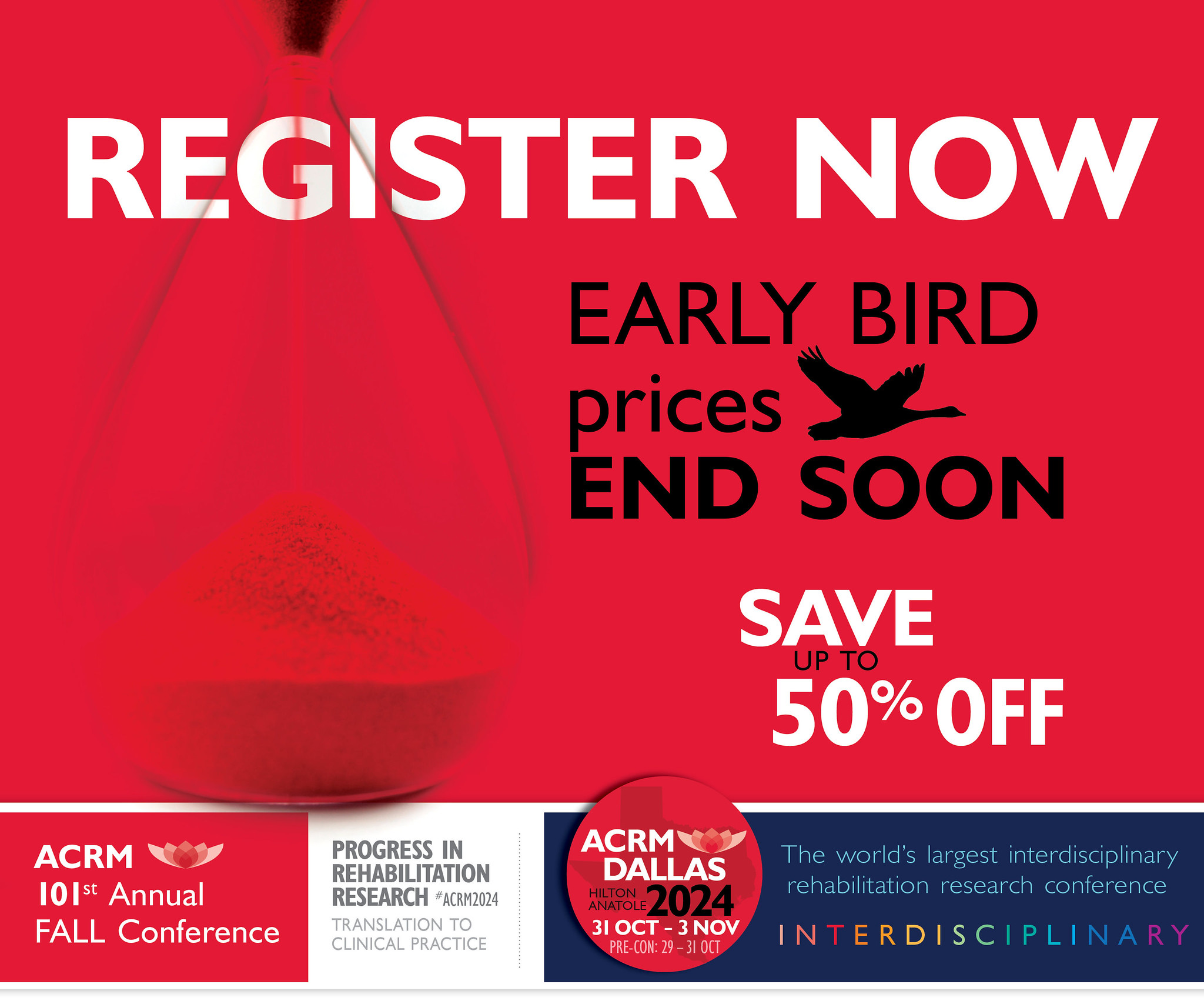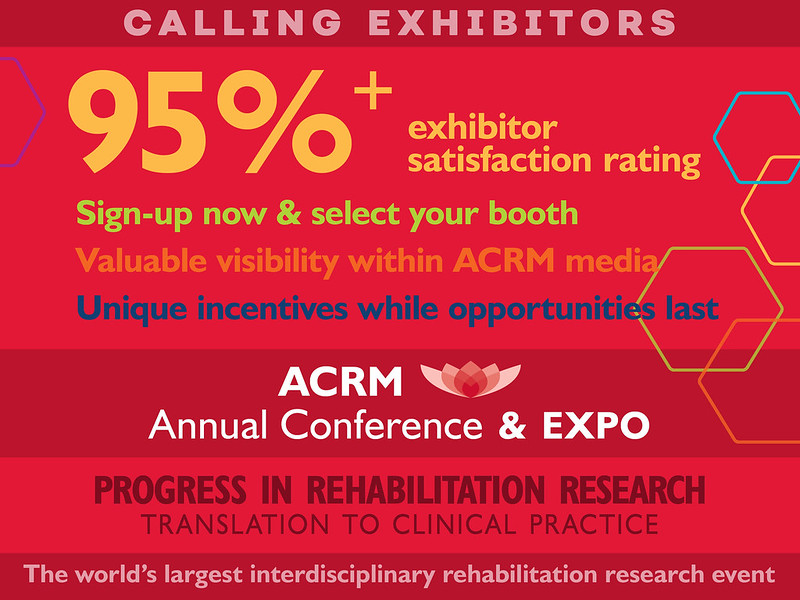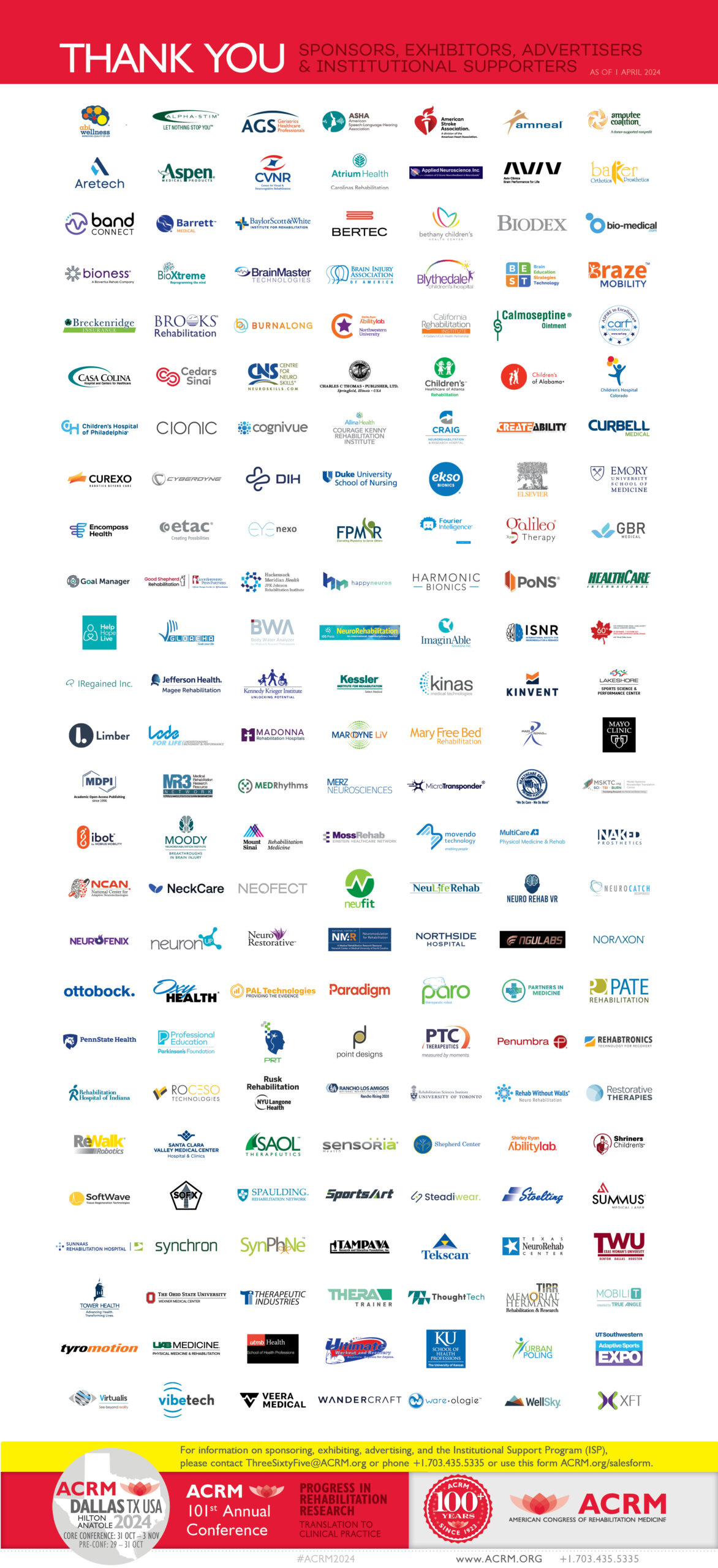INSTRUCTIONAL COURSE:
ACRM TRAINING INSTITUTE
12 – 13 APR 2019 (Day/Time TBD)
HILTON CHICAGO // 720 S. Michigan Ave
Chicago, Illinois, USA
Earn up to 3.5 hours of CME/CEUs
REGISTRATION COMING SOON …
DESCRIPTION
The concept of quality is not new, but the language related to quality and the initiatives around quality models have evolved. Healthcare reform mandates are impacting all rehabilitation providers. Physical, occupational and speech language pathologists, psychologists, nurses and physiatrists are amongst those who need to demonstrate their value in an increasingly competitive healthcare market. Furthermore, there is a critical need to grow the rehabilitation evidence base in order to continue to advance clinical care for people with all types of disability. Provision of the highest quality rehabilitation care and to meaningfully contribute to the rehabilitation evidence base, providers need to measure outcomes. However, despite the awareness of this need, less than half of rehabilitation providers actually utilize outcome measures routinely in practice. Jette et al. (2009) demonstrated that only about 48% of surveyed PTs indicated that they use standardized outcome measures.
The barriers include lack of knowledge, time and resources for identifying and implementing the routine collection of outcomes in the clinical setting. Reporting federally mandated outcome measures is a reality for many rehabilitation providers. Consequently, all rehabilitation clinicians can and should develop the practice of collecting outcomes. This will include condition-specific measures in addition to federally-mandated global measures (Gage et al., 2007). Examples may include outcome assessment for mitigating safety risks, interventions, etc. Understanding the rationale and importance of regularly and systematically using outcome measurement to inform clinical practice will not only provide data to help demonstrate value, but should also ultimately lead to improved patient outcomes.
There are numerous rehabilitation outcome measures and scales and determining which to use is challenging (Haigh, et al., 2001; Hanna et al., 2007). Some are appropriate for a wide range of diagnostic groups and others are more disease-specific. Knowing which factors are important for selecting the right outcomes measures for the right patients is important for ensuring data are reliable, valid, and clinically useful. Resources for locating and obtaining tools are important for ensuring use of outcomes assessment becomes a routine part of clinical practice.
Finally, outcome measurement is important not only for demonstrating value, but also to increase and advance clinical knowledge. This will provide clinicians with clinical knowledge and patient-related outcome information that is intelligently filtered and synthesized at appropriate times in order to enhance patient care. Automatic provision of decision support as part of the provider’s workflow may lead to effective and efficient patient outcomes.
The purpose of this instructional course is to provide rehabilitation providers the rationale and guidelines for choosing outcomes to use routinely in a variety of clinical settings. A framework will be provided to guide the choice of outcomes, including tools to assist in this endeavor. Considerations for choosing outcomes for use will be discussed from a management perspective specifically related to use of outcome measures as benchmarks for process improvement and quality of care. Regardless of setting, evolution from data to knowledge requires integration of outcomes measures in meaningful ways to inform decisions about care. This presentation will focus on interdisciplinary examples from multiple sources that can enhance decision making and improve patient outcomes as well as address current use, barriers and facilitators for implementation of standardized measures (Swinkels, et al., 2011).
Learning Objectives
Upon completion of the course, participants should be able to:
- Recognize the value and importance of outcome assessments in routine clinical practice of using classification schemes
- Determine outcome assessment selection including interpretation of measurement properties
- Evaluate, interpret and discuss strategies for integration of outcome assessments into clinical practice
- Increase awareness of how discrete data can be synthesized into knowledge to expedite patient care.
FACULTY
 Trudy Mallinson, PhD, OTR/L, FAOTA
Trudy Mallinson, PhD, OTR/L, FAOTA
Associate Professor
The George Washington University, Washington, DC
 Pamela Roberts, PhD, OTR/L, SCFES, FAOTA, CPHQ, FNAP, FACRM
Pamela Roberts, PhD, OTR/L, SCFES, FAOTA, CPHQ, FNAP, FACRM
President Elect, ACRM Board of Governors
Chair, Annual Conference Program Committee
Program Director, Cedars-Sinai Medical Center
Department of Physical Medicine and Rehabilitation
Los Angeles, California USA
 Richard Riggs, MD
Richard Riggs, MD
Vice President and CMIO
Cedars-Sinai, Los Angeles, CA
 Deborah Backus, PT, PhD
Deborah Backus, PT, PhD
President, ACRM Board of Governors
Director, MS Research
Shepherd Center, Atlanta, GA
 Sarah Morrison, PT, MBA, MHA
Sarah Morrison, PT, MBA, MHA
CEO
Shepherd Center, Atlanta, GA
 Maria Cecilla Alpasan, MA, OTR/L, CPHQ
Maria Cecilla Alpasan, MA, OTR/L, CPHQ
Quality and Education Coordinator
Cedars-Sinai, Los Angeles, CA
CME/CEUs
Continuing education hours will be offered for the following professionals:
- Occupational Therapists
- Physical Therapists (California Only)
- Speech-Language Professionals (ASHA)
- Psychologists (APA)
- Physicians (ACCME)
INCLUDES
- Live instruction
- Access to presentation slides
- CME/CEUs
- 6-months introductory ACRM membership (for non-members)
*Although significant changes are not anticipated, all schedules and presenters posted on this website are subject to change.










